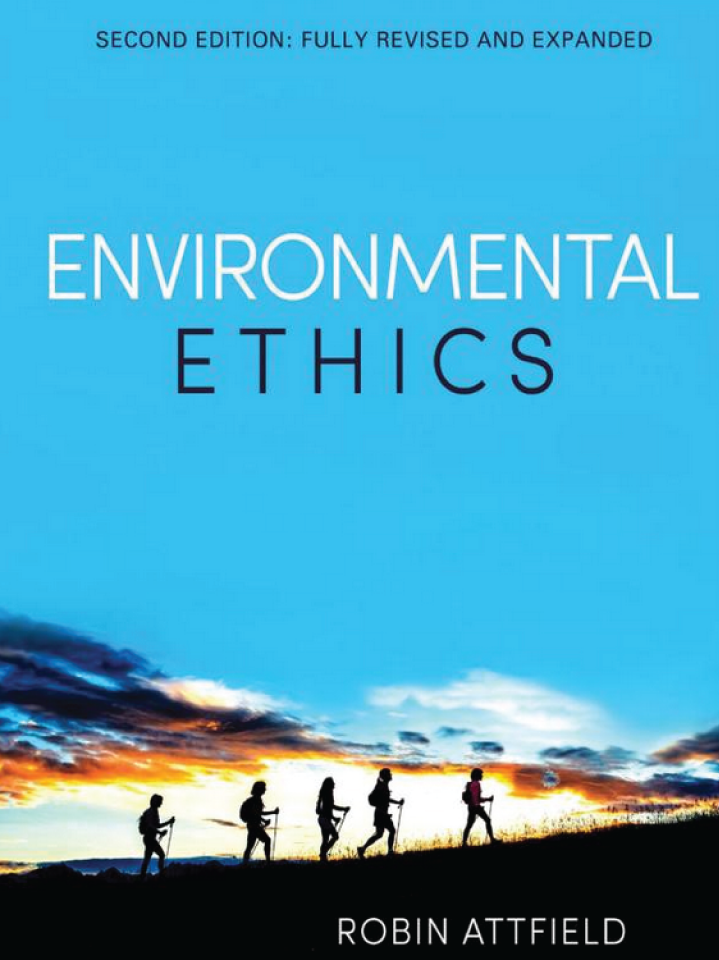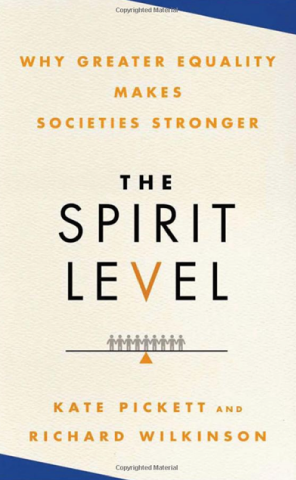|
|
31 March 2014 - "We support the elegant C&C principle as it based on social & environmental justice." Greening the Academy
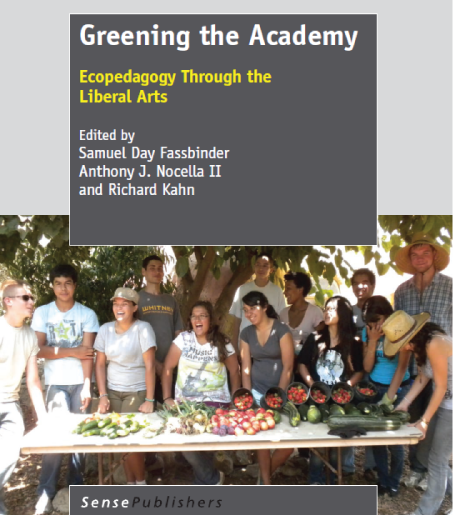
GREEN ECONOMICS AND LIFESTYLE CHANGES
On the other hand a “green economics agenda” argues for a life style change which provides less consumption, less resource use and alternatives to the consumption patterns and high mass consumption of Rostow of the Kennedy administration – the main economics policy paradigm of the last 60 years.(Jorion2011) It argues for lower growth – in developed countries - contraction and convergence for everyone. This view allows for degrowth shift to be included, as it reduces overall economic activity and lowers GDP and typically the GINI coefficient and other measures of well being go up in advanced economies, above a certain level of satisfaction of the basic physical requirements of living. The emphasis on growth as an end itself disappears. The alleviation of poverty, education of everyone especially girls, the participation in democracy, the halting of climate change and sea level rise and the halting of biodiversity loss are all important aims of such an economy. The equality within and between countries and between generations becomes much more interesting in such an economy. This method allocates more to less developed countries and less to more developed countries.
Green Economics intrinsically is supportive of the Contraction and Convergence, based on the principle proposed by Aubrey Meyer of the Global Commons Institute initially for reducing global carbon emissions by a consensus of contracting larger emitters and expanding emitters who are not using enough. This elegant solution is based on social and environmental justice and so is attractive to green economists. It has been adopted as a principle for carbon by the UNFCC. As economists, green economists also regard it as a key idea to implement a green economy. In practise less developed countries can still grow to meet in the middle range of basic living standards but those over consuming countries need to contract to meet in the middle to ensure that there is enough to go round.
Greening the Academy - Ecopedagogy Through the Liberal Arts
Edited by Samuel Day Fassbinder
Anthony J. Nocella II
and Richard Kahn
31 March 2014 - "How pretty is that?" Babily Daybe whimsy turns inside out & Jelle's Garden changes from winter to spring . . .
31 March 2014 - "Extraordinary persistence & ingenuity devising a legal & intellectual framework." Crispin Tickell on Meyer & C&C.
31 March 2014 - "Wheel Meet Again." Fossil fuel burning now equals 400,000 Hiroshinma Bomb equivalent detonations each day.
31 March 2014 - "A Green Government will apply a C&C strategy to avoid catastrophic climate change."

Monday, 31 March 2014 Greens:
The debate is over-act now on Climate Change THE Intergovernmental Panel on Climate Change (IPCC) report’s stark warnings of the dire consequences of our continuing failure to tackle climate change on planet and people must act as a wake-up call, says the Green Party, the only party with workable policies in place to mitigate the threat and adapt for a sustainable future.
Climate change has already cut into the global food supply and is fuelling wars and natural disasters, but governments are unprepared to protect those most at risk, says the report (1) released today (31 March 2014) from the UN's climate science panel.
Commenting on the publication today, Natalie Bennett, Green Party Leader, said: “The scientific debate is over. Climate change is a reality, here, with us today. Its threat is enormous and can no longer be ignored.
“On climate change, governments are taking too little action too slowly in part because they are overly and unduly influenced by oil, coal and gas big business interests. In Britain, we also have a government that is incapable of understanding that the old economic model is broken and needs to be radically changed, as it is not only incompatible with dealing with climate change, but also failing to meet people's basic needs. "The Coalition Government’s flag-waving for fracking, which will only accelerate global warming, is the latest in a long line of destructive decisions driven by corporate interest with scant regard for the negative impact on people and planet. “Climate change and the state of our environment is going to be one of THE issues of the European election on May 22 – and it’s only the Green group, already the fourth largest in the European parliament – who are going to put it truly front and centre. “Greens are going to hold firm on fighting for a national renewables target for each European state, demanding that Europe provide global leadership in setting a target of provide global leadership in setting a target of at THE VERY least a 50% reduction in greenhouse gas emissions by 2030, and demanding high, binding energy efficiency standards.”
A Green government will take bold, responsible and scientifically credible action to avoid catastrophic climate change. We will apply a contraction and convergence strategy to reduce emissions to a safe and equal per-capita level. Pursuing the necessary annual reductions of around 10% will create many jobs. We will provide free monthly carbon emission allowances and people wanting to use more than their fair share could trade allowances. Total emissions will be capped and will reduce each year in line with our 2030 emission reduction target of 90% on 1990 levels.
30 March 2014 - C&C advocated by Sir David King, the UK Governement's New Special Advisor on Climate Change

David King's proposal of a global emissions quota based on population has its roots in the idea of "contraction and convergence", first put forward in the early 1990s, by which countries would reduce their greenhouse gas output and move towards equal emissions across the world.
Reporting David King's SSEE Proposal in the Guardian [15th July 2011] supporting C&C
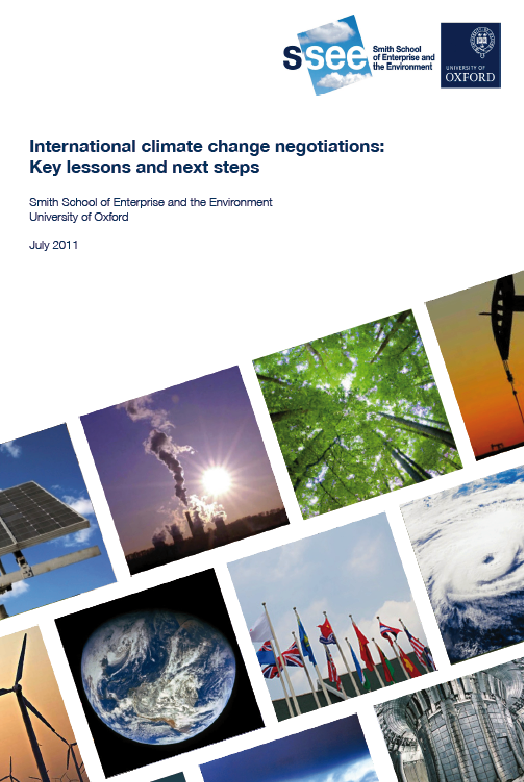
Here we present a proposal based on the Contraction and Convergence principle as proposed by the Global Commons Institute in the early 1990s. This principle describes a trajectory whereby the overall emission level is reduced over time whilst the per capita emissions rates of different countries converge on a low value aimed at meeting the 2°C objective. This allows developing countries to maintain some emissions growth in the intermediate phase, which is made up for by a decrease in developed country emissions. The overall amount emitted should not be more than will cumulatively push temperature increases over 2°C. In the global cap and trade system we propose here, emissions are traded based on a per capita allocation of CO2 trading permits at some future date (2050 is favoured by many).
International climate change negotiations: Key lessons and next steps
Smith School of Enterprise and the Environment [SSEE] University of Oxford July 2011
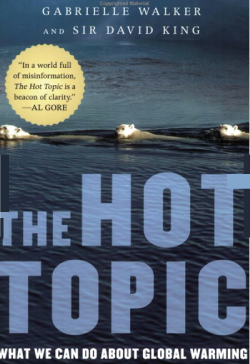
“Contraction and Convergence is the buzz phrase on many negotiators’ lips. It has the benefits that every nation is involved from the beginning, that it’s a transparent, straightforward concept and that it produces a definite final concentration of greenhouse gases.“ [9]
[9] 'Contraction and convergence’ is the science-based global climate-policy-framework proposed to the UN since 1990 by the Global Commons Institute
The Hot Topic [2008]
David King on C&C
Sir David King
Special Representative for Climate Change
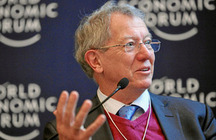
Biography
The Foreign Secretary appointed Sir David King as his new permanent Special Representative for Climate Change in September 2013. Sir David was previously the Government’s Chief Scientific Advisor from 2000 – 2007, during which time he raised awareness of the need for governments to act on climate change and was instrumental in creating the Energy Technologies Institute. He also served as the Founding Director of the Smith School of Enterprise and Environment at Oxford; was Head of the Department of Chemistry at Cambridge University 1993-2000 and Master of Downing College at Cambridge 1995 -2000.
Sir David has published over 500 papers on science and policy, for which he has received numerous awards, and holds 22 Honorary Degrees from universities around the world. Elected a Fellow of the Royal Society in 1991, a Foreign Fellow of the American Academy of Arts and Sciences in 2002 and knighted in 2003, Sir David was also made an Officier of the French Legion d’Honneur’ in 2009, for work which has contributed to responding to the climate and energy challenge.
Special representatives use their expertise to develop a greater coherent effort in making sure that the FCO works closely and effectively with foreign powers.
30 March 2014 - "C&C - sensible; fair; just; honourable; common sense." Bob Brown Leader of the Australian Greens

Memo for a Saner World
Bob Brown - Leader of the Australian Greens
The world's wealthiest countries are the most culpable. The richest 20 per cent of the world's population burn 80 per cent of its fossil fuels, producing 80 per cent of the problem gas. The remaining 80 per cent of people produce just 20 per cent - we in the wealthy West generate sixteen times as much greenhouse gas per person as those in developing countries. In the developed countries, Australians, followed by the Americans, are the worst polluters of all. Every one of us should put that statistic in our pipe and smoke it.
Here is a picture more of greed and studied ignorance than gloom and doom. The latter can be fixed if the former are given up. This is a moral challenge calling for a political response. And there is a good solution. Aubrey Meyer, the founder of London's Global Commons Institute, calls it 'contraction and convergence'. I would also call it 'one planet, one person, one value'. It is a just and honourable way out of the global warming terror, and one which is every bit as much common-sense as it is a hard ask.
Stage one of the plan is to win international agreement on a level of atmospheric carbon dioxide that would ensure the Earth's ecological, social and economic future. Let's say that this is 325 parts per million, roughly halfway between the past natural level of 280 ppm and the current, human-induced level of 375 ppm.
There would follow agreements on a starting date for lowering gas emissions - say the year 2010, which would allow high-energy-consuming countries time to adjust their economies - and on a target year by which atmospheric emissions are sufficiently reduced to make that level of 325 ppm achievable. The year 2030 is realistic.
Stage two of the plan is to bestow equal status on everyone on Earth by allocating each country a level of fossil-fuel consumption based on its population. Every country would be permitted the same emission of carbon dioxide per person, to lake effect in the agreed starting year (2010). Those richer communities (energy-guzzlers like Australia. Japan, Canada, the United States and Europe), unable to stick to their allocations would buy permits from the poorer countries, so keeping a lid on the total amount of 10ss11 fuels burnt. The trading system would help close the gap between rich and poor.
Sensible and fair as this idea may be, corporate and rich-country political pressure is drowning it like a bag of unwanted kittens. The Greens' job is to rescue it. This obligation is all the more imperative when you look at what else might drown, and when you take account of the fact that Ihe further away from the equator you get, the faster the warming will be. But to date, even the first-step Kyoto Protocol on climate change has been spumed by the Australian, American and Russian governments. The Kyoto Protocol aims to reduce greenhouse-gas production to 5 per cent below 1990 levels, but it is only a start. The global-warming situation is so drastic that it calls for reductions of 60-80 per cent below those levels.
24 March 2014 - With all this eminent C&C say-so, some might wonder if UNFCCC-Compliance has been 'Tango-ed'?
With its Perfect Pythagorean Tango Rhythm [8:5,3,2,1], it definitely beats being quangoed . . . .
22 March 2014 - "What's the alternative to growthism? It can be summed up in the phrase 'contraction & convergence'. Rupert Read

Challenging 'growthism' - Full essay by Rupert Read here
What's the alternative to growthism? It can be summed up in the phrase 'contraction and convergence'.
The overall consumption of a wealthy country such as Britain needs to contract while each household's individual rate of consumption needs to converge towards equality. The same applies between countries, too.
The richer few will have to cut their consumption much more than the rest. The powerful will resist this. But the outcome, as Wilkinson and Pickett explain in The Spirit Level, will tend to make people happier and better off in almost every way: as more equal societies are better in almost every way.
There is a job of framing and communication to be done: but, given a good new yardstick for measuring progress instead of GDP, this is surely achievable. One can live a better life, one can enjoy real progress, while consuming less, and impacting on the world much less
Rupert Read is Green Party Transport Spokesperson, and lead MEP-candidate for the East of England at this year's European Elections. Website: www.rupertread.net. Twitter: @GreenRupertRead (political) or @RupertRead (personal).
20 March 2014 - "C&C preferable if intra- & inter-generational justice apply." Carbon Pricing, Larry Kreiser, Ana Yabar Sterling
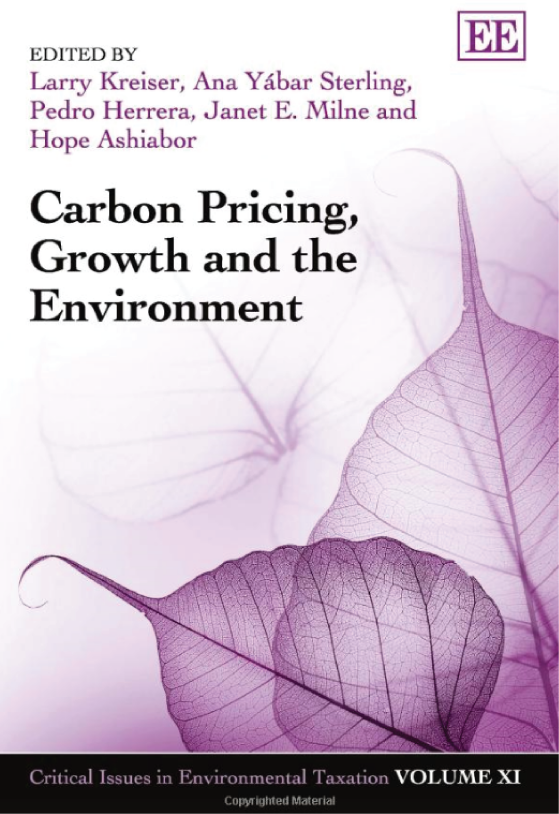
While the optimal level of pollution is impossible to determine exactly by economics, cost—benefit analyses can help approximating a reasonable level (Stern 2007). In any case, the cap must create scarcity in order to implement a price signal for individual emitters' internal emission level optimization. Greater scarcity increases the incentives to innovate. By fixing an adequate cap size, also, the open access resource is transformed into state property and the scale decision is made independent of distribution and allocation, allowing the government to prevent abuses of the resource. In addition, other criteria, such as environmental necessities or fairness criteria, can be used, thus lowering decision-making costs. From an ecological point of view, the cap must be in line with the needs for global climate protection, e.g. the 2'C target. By using the Budget Approach (WBGU 2009), a total allowable amount of emissions of 1,100 billion tons of CO2eq for the period of 1990 to 2050 can be calculated, which, due to emissions in the past, !eaves only 600 billion tons of emissions for the period 2010 to 2050. If, then, for justice reasons (equality, polluter-pays principle) equal rights to use natural resources for each and every citizen or the world are accepted, national emission caps can be derived immediately, and even historic responsibilities can be accounted for following the polluter-pays-principle.
If, however, intra- and inter-generational justice should apply, the 'Contraction & Convergence' (Meyer 2000) appears preferable, in which the total number of emission allowances contracts from the status quo to an ecologically acceptable level, and per-capita emission rights converge. This would result in a steep decrease in the cap sizes of industrialized countries, while less developed countries might even increase their emissions. Anyway, a stringent absolute cap would support inter-generational justice, because future generations would be safeguarded against dramatic changes in their livelihood. However, all too stringent caps may interfere with intra-generational justice, for example, because due to the regressive distributional effects of higher energy prices, poorer households may be faced with high burdens. Again, the Contraction and Convergence proposal would, at least to a large extent, take account of those restrictions.|
Carbon Pricing, Growth and the Environment
Larry Kreiser, Ana Yabar Sterling
20 March 2014 - "I subscribe to the C&C view." Walter Vergara Head of Climate Change Inter-American Development Bank

Sitting deep in Washington DC’s Inter-American Development Bank (IaDB) HQ this week, at a forum on national development banks and climate change, I heard the IaDB’s climate change head, Walter Vergara talking about Latin America’s huge adaptation as well as mitigation challenge.
He noted that the world has to urgently get down to no more than to 2Gt emissions per capita quickly – and of course, that the US is still at 25Gt, and the EU at 15. “I subscribe to the view of contraction and convergence” he said.
My friend Aubrey Meyer, the lone wolf originator of the approach, will be pleased to hear that from a big bank.
"Good Initiative"
Walter Vergara Head of Climate Change Inter American Development Bank
18 March 2014 - "C&C, a widely supported approach to negotiating GHG emissions." Environmental Ethics Robin Attfield
18 March 2014 - "Strong links with C&C Proposal." Environmental Law, Stuart Bell, Donald McGillivray, Ole Pedersen OXFORD
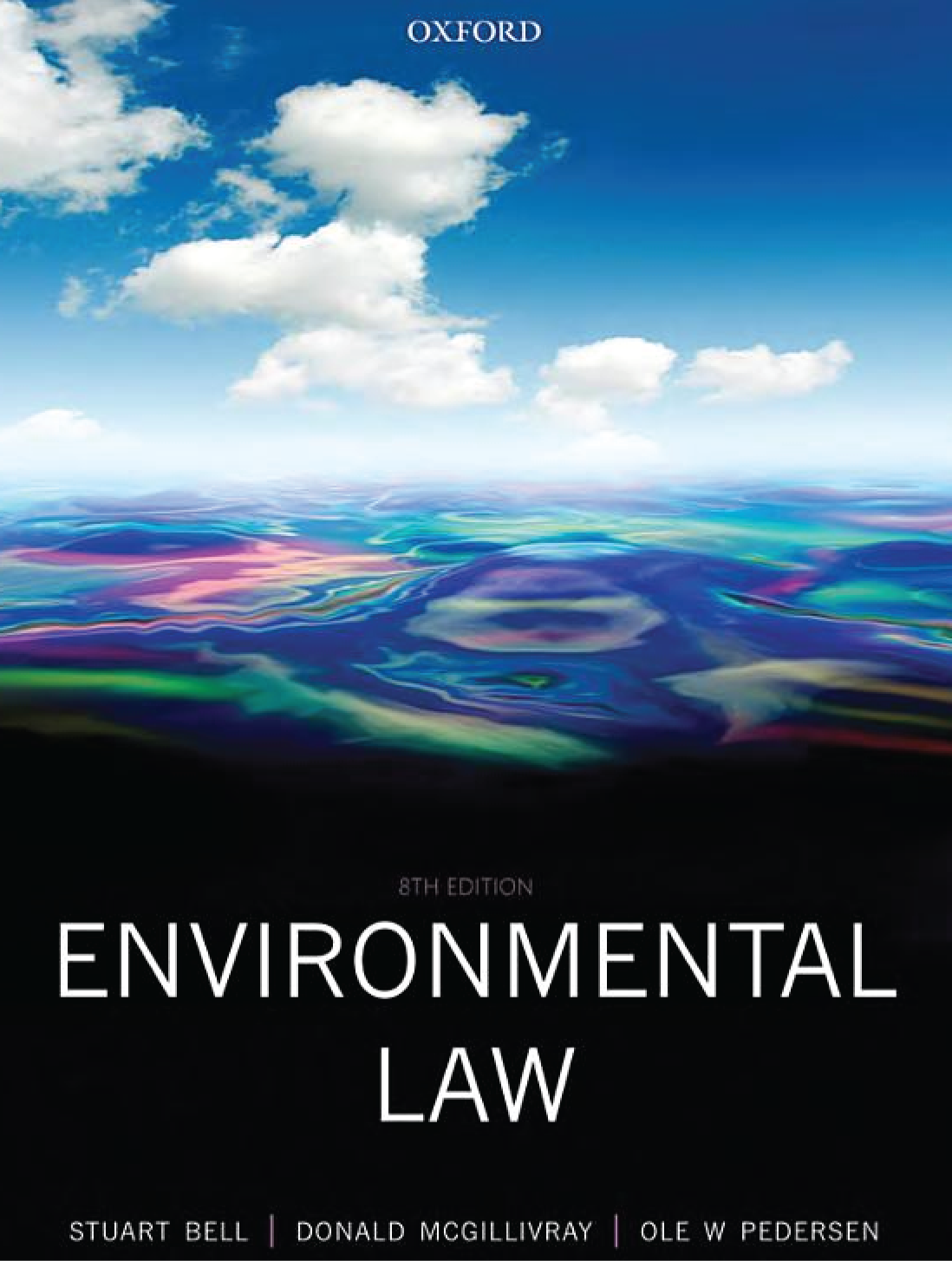 Environmental Law
Environmental Law
Stuart Bell, Donald McGillivray, Ole Pedersen
These kind of personal carbon accounts (sometimes known as Doestic Tradable Quotas)
have strong links with the Contraction and Convergence proposal for a globally fair allocation of emissions rights under which states would over time have emissions right on a per capita basis. See
18 March 2014 - "Tough Contraction and Convergence" Neujobs Working Document Vienna [qua UNEP GCI]
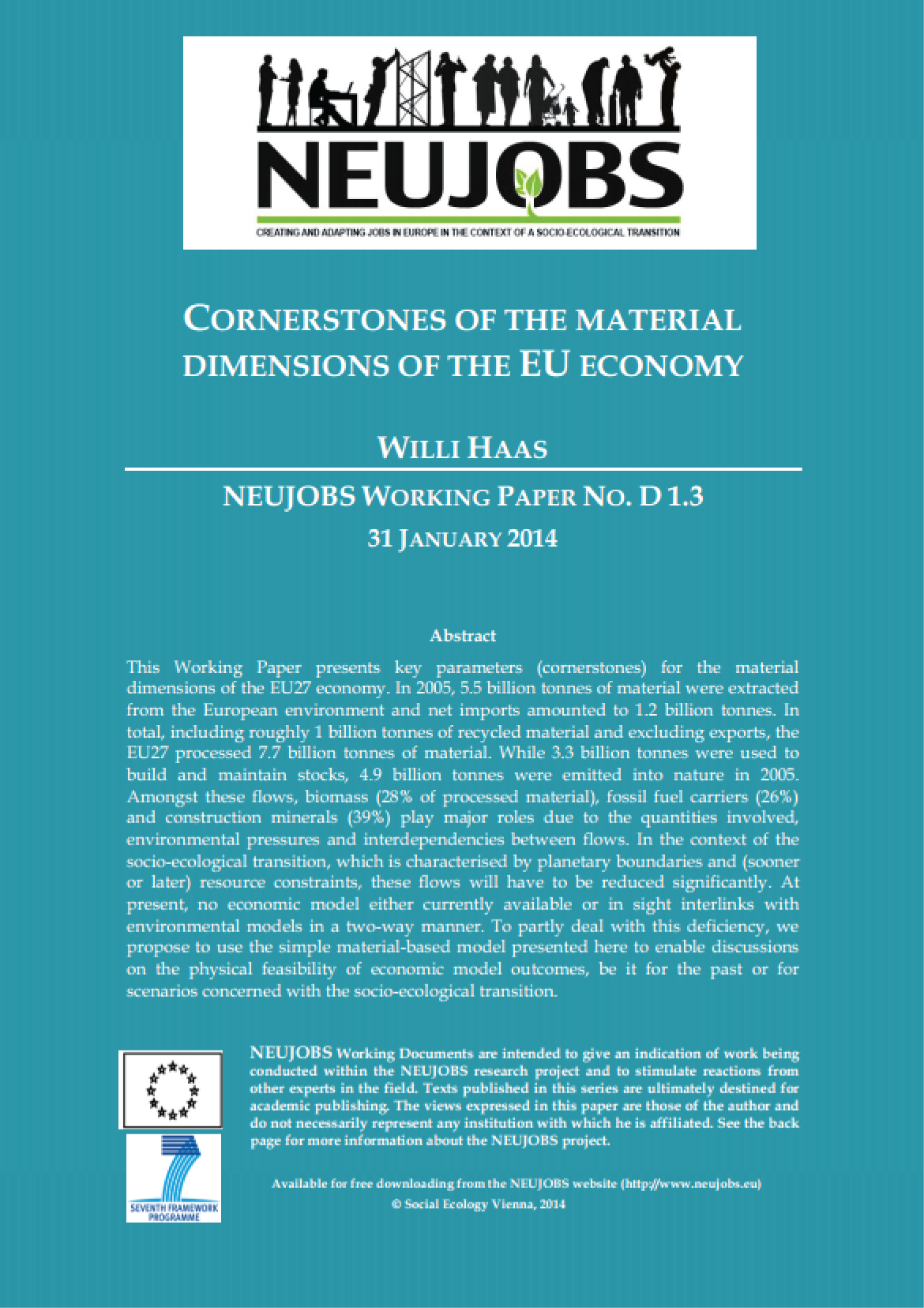
CORNERSTONES OF THE MATERIAL
DIMENSIONS OF THE EU ECONOMY
WILLI HAAS NEUJOBS WORKING PAPER NO. D 1.3 31 JANUARY 2014
Decoupling natural resource use from economic growth
UNEP’s International Resource Panel published a report in 2011 assessing the potential of decoupling resource use and environmental impacts from economic growth.
On a global level, this report presents a similar picture of the dynamics of resource use during the 20th century as we have shown in Section 2.6 of the WP1 report (D1.1. “Socio-ecological transitions: Definition, dynamics and related global scenarios”). The main conclusion offered was that although a decoupling of resource use from GDP could be observed, this did not prevent global annual resource extraction from skyrocketing (materials: an eightfold increase, energy: a tenfold increase in the course of this one century). A more detailed analysis by groups of countries according to their development status revealed that it was the increasing per capita resource use that mainly drove the rising resource consumption of high-income countries, while it was population growth driving resource use of developing countries. In the last two decades though, a substantial catching-up of developing countries in terms of percapita consumption took place – a convergence process of socio-metabolic patterns towards the level of high-income industrial countries. This triggered a new acceleration in annual global resource extraction that would, if convergence to this level continued (i.e. a continuation of observed trends), imply a tripling of global annual extraction of material resources, with the severest environmental consequences. They find that this scenario “probably represents an unsustainable future in terms of both resource use and emissions, exceeding all measures of available resources and assessments of limits to the capacity to absorb impacts.” (UNEP, 2011a: 29). On the other hand, a global convergence of socio-metabolic rates is considered welcome from the standpoint of international equity.
In response to this dilemma, the decoupling report developed three scenarios for global material consumption:
- The above trend scenario, assuming that high-income industrial countries maintain their per capita resource consumption, and developing countries increase their consumption rates to the same level until 2050. This would lead to a tripling of global annual resource extraction by 2050.
- Moderate contraction and convergence, in which high-income industrial countries halve their per capita resource consumption by 2050, and developing countries increase their metabolic rates to the same level. This would lead to a 40% increase in global annual resource extraction by 2050.
- Tough contraction and convergence, in which total global resource consumption is maintained at the 2000 level, and all countries converge to the same per capita resource consumption. This by definition would keep global annual resource extraction at its current levels, but allow for an average metabolic rate of no more than 5.5 tonnes per capita and year.
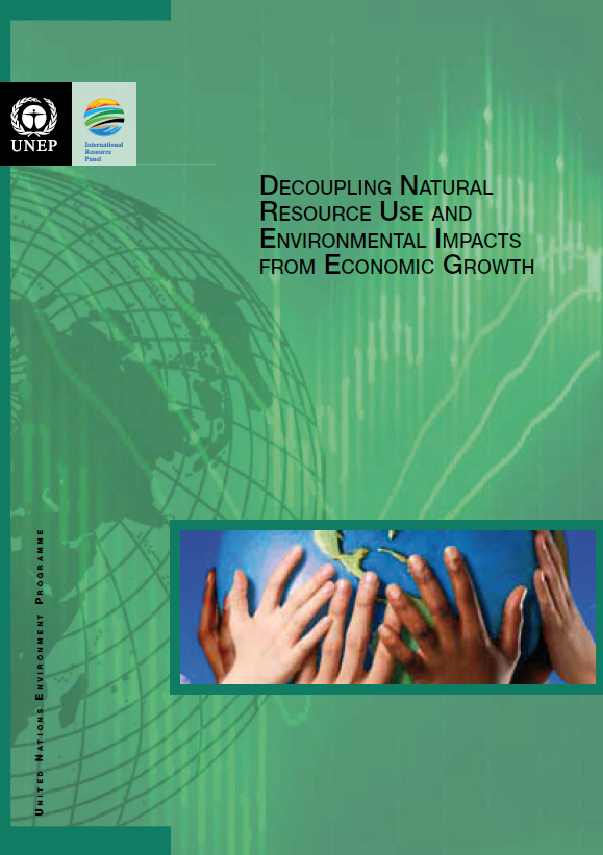
Having reviewed the trends in the use of natural resources and accompanying undesirable environ-mental impacts in the first section of Chapter 2, the last section of that chapter considers possible future implications by presenting three brief scenarios: (1) business as usual (leading to a tripling of global annual resource extraction by 2050); (2) moderate contraction and convergence (requiring industrialized countries to reduce their per capita resource consumption by half the rate for the year 2000); and (3) tough contraction and convergence (aimed at keeping global resource extraction at its current levels). None of these scenarios will lead to actual global reductions in resource use, but all indicate that substantial reductions in the resource requirements of economic activities will be necessary if the growing world population can expect to live under conditions of sustainable resource management. The key message of the tough scenario is that despite population growth to roughly 9 billion people, the pressure on the environment would remain roughly the same as it is now. The emissions correspond approximately to the lowest range of scenario B1 of the IPCC SRES, but are still 20% above the roughly 5.5 GtC/yr advocated by the Global Commons Institute for contraction and convergence in emissions (GCI, 2003).
UNEP - 2011: Decoupling Natrual Resource Use& Environmental Impacts from Economic Growth
Dr Ernst von Weizsacker, Dr Ashok Khosla, Co-Chairs International Resource Panel
17 March 2014 - "C&C - this intuitively appealing strategy has gained increasing recognition." The Meat Crisis Joyce Da Silva
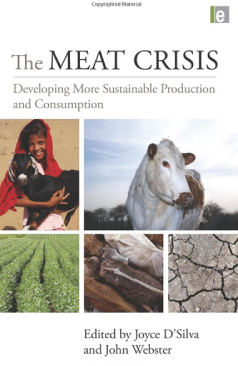
Contraction and Convergence: A Sustainable and Equitable Resolution
The composite issue of achieving modest, equitable and environmentally sustainable animal-source foods consumption can be best tackled via the principle of ' contraction and convergence' This intuitively appealing strategy originated with contraction-and-convergence modelling of future changes in per capita GHG emission levels, to ensure contraction of total global emissions via convergence on a common level of per capita emission (Meyer, 2000). This strategy has gained increasing recognition, stimulating its suggested application to solving the historically based disparities between high- and low-income countries for many greenhouse-related production and consumption practices.
In the present context, then, the 'contraction ' component requires that the world commit to reducing the global total intake of meat (especially red meat from ruminant animals) by some specified date in future, This would, ideally, be part of a portfolio strategy to mitigate climate change - across various sectors such as commerce, energy generation, urban planning and human behaviour.
The 'convergence' component specifies that the contraction of consumption is achieved equitably Thus, today's high-consuming populations would reduce their intake downwards 10 the agreed global per capita level of sources, is now being made in relation to some of the feedstock produced for biofuels.)
Overall, then, this contraction and convergence strategy, in relation to world meat consumption, would be a win-win strategy. Greenhouse gas emissions would be reduced and global warming would be slowed. Health risks in high-consuming populations would be lowered, while gains in nutritional status would occur in lower-income countries via reduction of deficiencies of iron, protein and energy intake with benefits to child health and development in particular. In lower-income countries, the 'convergence' ceiling figure of 90g of meat per day should mostly preclude any increases in risks of cancer, heart disease or obesity-related diabetes.
"The Contraction and Convergence strategy, phased in over several decades, would therefore be good for the planet, good for enhancing global equity and generally good for population health."
Meat Crisis
Joyce Da Silva and John Webster
15 March 2014 - "Earthrise - the 45th Anniversary." Amazing & beautiful recreation of Lunar Reconnairssance Orbiter from NASA
Published on 20 Dec 2013
In December of 1968, the crew of Apollo 8 became the first people to leave our home planet and travel to another body in space. But as crew members Frank Borman, James Lovell, and William Anders all later recalled, the most important thing they discovered was Earth.
Using photo mosaics and elevation data from Lunar Reconnaissance Orbiter (LRO), this video commemorates the 45th anniversary of Apollo 8's historic flight by recreating the moment when the crew first saw and photographed the Earth rising from behind the Moon. Narrator Andrew Chaikin, author of A Man on the Moon, sets the scene for a three-minute visualization of the view from both inside and outside the spacecraft accompanied by the onboard audio of the astronauts.
The visualization draws on numerous historical sources, including the actual cloud pattern on Earth from the ESSA-7 satellite and dozens of photographs taken by Apollo 8, and it reveals new, historically significant information about the Earthrise photographs. It has not been widely known, for example, that the spacecraft was rolling when the photos were taken, and that it was this roll that brought the Earth into view. The visualization establishes the precise timing of the roll and, for the first time ever, identifies which window each photograph was taken from.
The key to the new work is a set of vertical stereo photographs taken by a camera mounted in the Command Module's rendezvous window and pointing straight down onto the lunar surface. It automatically photographed the surface every 20 seconds. By registering each photograph to a model of the terrain based on LRO data, the orientation of the spacecraft can be precisely determined.
This video is public domain and can be downloaded at
15 March 2014 - "C&C means equal per capita allowances are established under an ecological cap ." UNESCO IHE Hoekstra
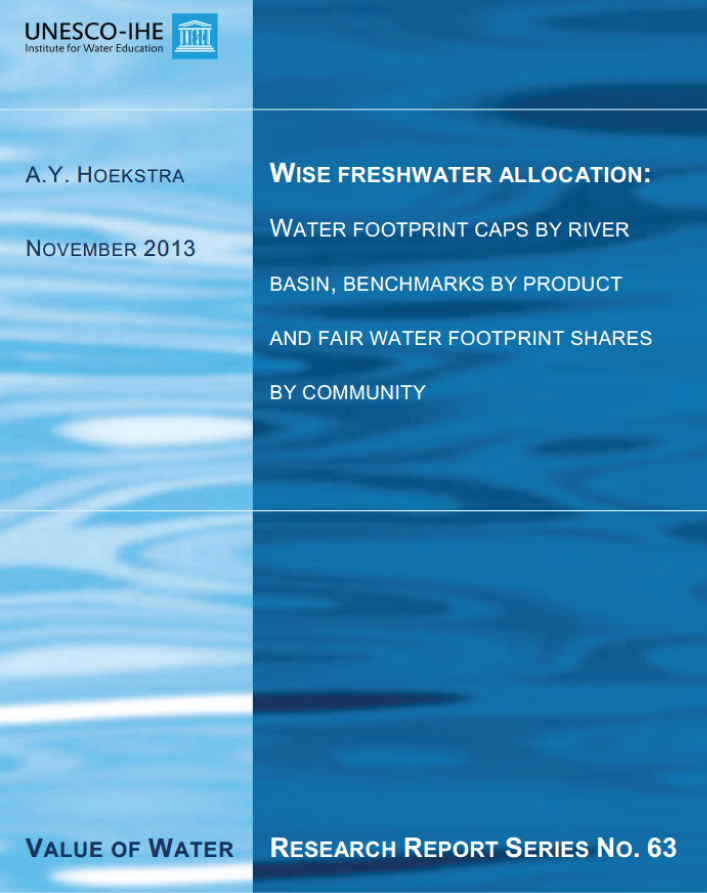
The need to establish water footprint caps in combination with the idea of fair water footprint sharing is comparable to what has been called the need for ‘contraction and convergence’. This means that equal per capita allowances are established under an ecological cap that converges towards a sustainable level (Jackson, 2009).
The idea of ‘contraction and convergence' was conceived in the mid-1990s by the Global Commons Institute (GCI) in London as a mechanism to reduce the global carbon footprint to a safe and sustainable level per person within the next few decades (Meyer, 2004). Overall emissions should ‘contract’ to a level compatible with the stabilization target, and per capita emissions ‘converge’ towards an equal per capita share of the overall emissions budget.
As Jackson (2009) puts it, the idea of ‘contraction and convergence' is a way of transparently structuring future negotiations on the understanding that prosperity is governed by ecological limits on the one hand and fair shares on the other.
WISE FRESHWATER ALLOCATION:
WATER FOOTPRINT CAPS BY RIVER BASIN, BENCHMARKS BY PRODUCT AND FAIR WATER FOOTPRINT SHARES BY
COMMUNITY A.Y. HOEKSTRA
NOVEMBER 2013
VALUE OF WATER RESEARCH REPORT SERIES NO. 63
11 March 2014 - Senator James Inhofe says, "my 20 kids . . . & grand-kids." Family fertility rates still above India & China.
The movie [below] includes at the end the throwaway line, "My twenty kids" . . .
. . . .
and you have to listen more carefully for the added, "and grand-kids" . . . its easy to miss.
In fact James Inhofe's entry in Wikipedia says the following: -" In 1959, Inhofe married Kay Kirkpatrick, with whom he has four children."
In other words the twenty comes from an average of four grand-children per child.
However, this average Inhofe-family-fertility-rate across these generations is still above the present rates of India and China.
In a very rough and ready calculation, which the Senator is welcome to correct, if the US as a whole were to continue breeding at the present Inhofe family fertility rate, within 5 generations the total number of people produced in the US would exceed the population of present day China and within six it would exceed present day global population by a factor of two.
11 March 2014 - Senator James Inhofe rejects emissions control as India & China are the problem [& hes says he's 20 children].
The Senator is from Oklahoma where at this time the per capita emissions average is just under 8 tonnes carbon per person per year and his personal fertility rate is well over ten times the replacement rate.
This means, thatwhile Oklahom's per capita emissions rate is about six times over the global average, James Inhofe's personal breeding rate is [apparently] over six times the average rate in India and China [where he now says the global warming problem resides . . . ] . . .
Only in America.
Sex & climate policy do have something in common; its called *emissions-management*.
3 tests apply; so James are your arrangements on these related matters: -
- consensual
- safe
- fair to 3rd parties?
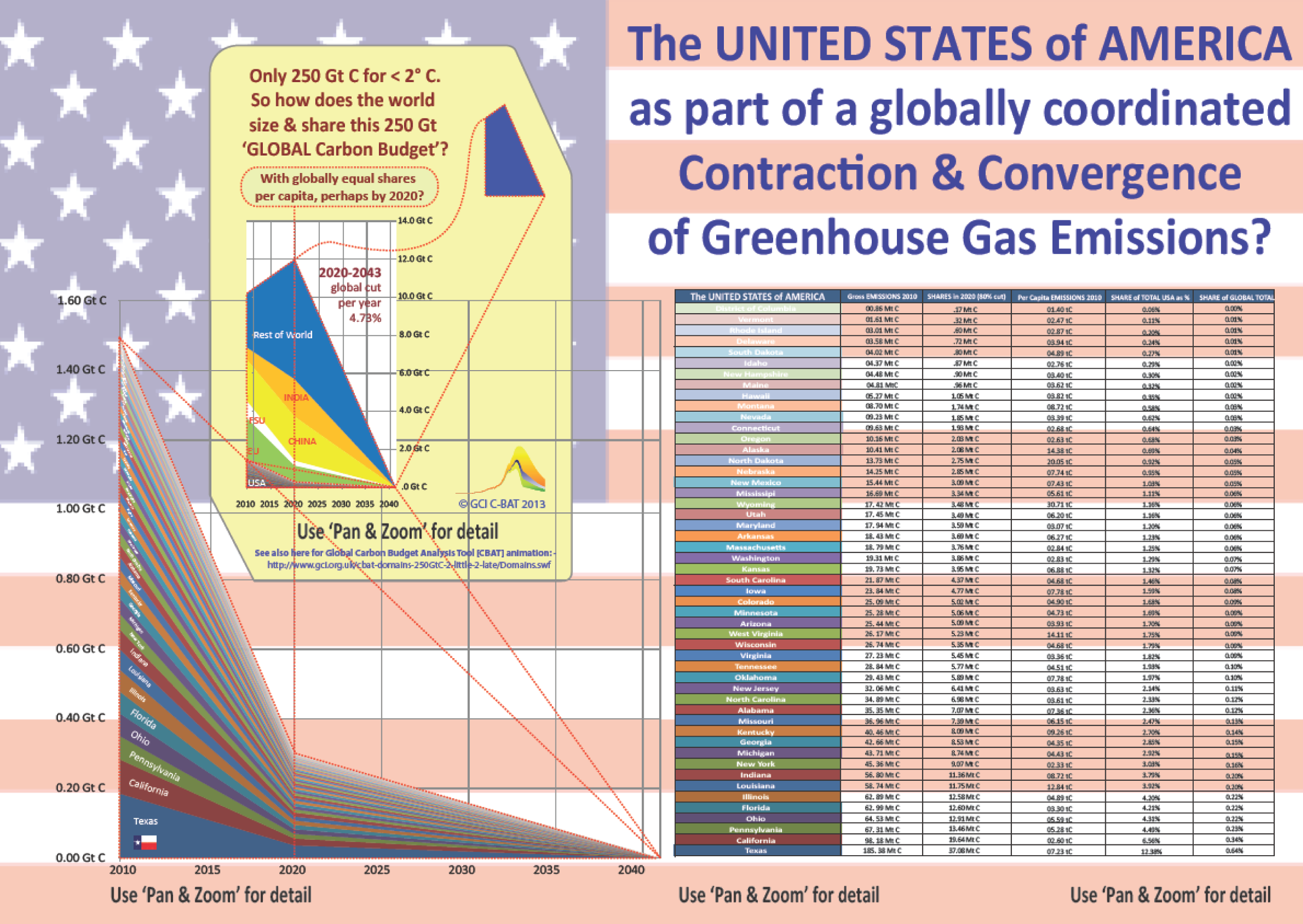
10 March 2014 - Scott Ludlam in Parliament - The Australian Greens at their *truly combative best* in Western Australia
09 March 2014 - "Why greater equality makes societies stronger." C&C in the 'Spirit Level' by Kate Pickett Richard Wilkinson
09 March 2014 - "We advocate Contraction and Convergence." Green Party of Aotearoa New Zealand

Read the Climate Change Policy Summary
Download the Climate Change Policy as PDF
Spokesperson: Kennedy Graham MP
Updated: 07-Mar-2014
Climate Change Policy
Introduction
International scientific consensus is that our climate is changing. As a result of human activities, atmospheric levels of carbon dioxide and other greenhouse gases, such as methane, are now higher than they have ever been in the last 650,000 years. These gases trap the heat from the sun, and our planet is becoming warmer, which is causing our climate to change.
New Zealand's response has been woefully inadequate under previous governments, with excessive reliance on an economic instrument (the Emissions Trading Scheme) that has been progressively weakened. The Green Party will meet the challenges of economic transformation to a low emissions economy in a holistic way, recognising the important complementarity between emissions reductions and other policy aims. These include healthy homes and liveable cities, clean and distributed electricity generation, affordable and safe mobility, green jobs and clean technology development, reduced consumption of resources, communities resilient to extreme weather, and pride in New Zealand's responsible role internationally.
Successful climate change mitigation and adaptation will be achieved by the combined effect of multiple Green Party policies working in conjunction with this one. See our Agriculture and Rural Affairs, Conservation, Economics, Energy, Environment, Forestry, Health, Housing, andTransport policies.
Also see our website section on Climate Change and the Greenhouse Effect for more information about climate change.
Definitions
Border Tax Adjustments: Import fees levied by emissions-taxing countries on goods manufactured in non-emissions-taxing countries.
Carbon Budget: The quantity of emissions that can occur within a certain timespan, usually expressed as gigatonnes (Gt) of carbon dioxide equivalent. For New Zealand this will represent our fair share of the annual global carbon budget, which is the maximum level of cumulative emissions that can be allowed without an unacceptable risk of breaching the threshold of two degrees Celsius average global temperature rise. To achieve that goal, the maximum allowable global emissions total from 2010 to 2050 is approximately 500Gt.
Carbon Sequestration: The process of transferring carbon from the atmosphere into biological or geological storage.
Contraction and Convergence: A strategy to reduce overall greenhouse gas emissions (Contraction) with all countries moving towards equal emissions per capita (Convergence).
Emissions Levy: A set price that must be paid for emitting greenhouse gases and that serves to discourage such emissions.
Emissions Trading Scheme (ETS): A market-based approach whereby the quantity of emissions are set by the government or regulator (either as a cap or on an intensity basis) and the price of an emissions unit varies according to demand.
Greenhouse Gases: Gases shown to be warming the climate and which require intervention to control, as defined by the Intergovernmental Panel on Climate Change (IPCC); primarily carbon dioxide (CO2), methane (CH4), nitrous oxide (N2O), sulfur hexafluoride (SF6), and halocarbons (such as CFCs and HCFCs).
Low Emissions Economy (also commonly referred to as a Low Carbon Economy): An economy that manages emissions to avoid adverse effects on the global climate.
Sustainable: An activity that can keep going indefinitely without depleting resources or accumulating wastes.
Vision
The Green Party envisions a world where all people live in harmony with the environment and where natural ecosystems flourish. Collectively we understand the dangers of human-made emissions that destabilise the world's climate and we co-operate at local, national and international levels to control our greenhouse gas emissions so that they do not negatively impact on global weather patterns, while at the same time avoiding unnecessary hardship.
Key Principles
The Green Party believes that:
-
We must act according to credible science on climate change, which demands urgent action to reduce greenhouse gas emissions as soon as possible, and sustained action to safely remove excess greenhouse gas from the atmosphere.
-
Māori economic, environmental and cultural interests, as provided for in Article II of Te Tiriti o Waitangi, must be protected to ensure that the effects of climate change and our response to it do not disproportionally impact upon the tangata whenua.
-
We have an obligation to act for the sake of vulnerable people, the wellbeing of current and future generations, the integrity of diverse ecosystems and the retention of a viable biosphere. We must think long term and start now because of the extensive lag time in climate effects.
-
A global agreement is crucial as a step towards concerted global action and we will play a constructive role in achieving a fair, effective, binding and ambitious agreement.
-
We must accept our responsibility to reduce emissions and we will advocate an approach of 'contraction and convergence' of emissions internationally, towards broadly equal shares of emissions per person.
-
Social equity and ecological sustainability must be inherent in the way we respond to climate change.
-
A range of instruments is needed to meet the requirements of climate change mitigation and adaptation. These include legislation and regulations, economic instruments and policies supporting public investment, community action, and voluntary initiatives by both business and organisations.
-
Pricing mechanisms will seek to ensure that polluting sectors will, within a short time, pay for the environmental and societal costs of their emissions, with no free riders.
-
Pricing and other mechanisms will take into account New Zealand's international obligations and be designed so as to manage fiscal risk to the Crown in a responsible manner.
-
Greenhouse gases differ in their origin, chemical nature, climate changing effects, persistence and assimilation by natural systems. Management of emissions ideally should recognise these differences.
-
Adaptation measures should develop resilient economies and communities, and minimise the impacts of climate change on low income and vulnerable sectors of society.
-
Transparency, credibility and education are essential if all stakeholders are to accept the policy framework and change their behaviour as a result.
-
Government must invest in research and development into the production methods and mitigation technologies to enable a successful emissions reduction programme (especially in energy production, forestry, and agriculture).
Policy Points
1. Targets and Agreements
A. Domestic
The Green Party will:
-
Establish a clear strategy, action plan and carbon budget for the transition to a net zero emissions, fossil-fuel free economy.
-
Support a 100% reduction in net greenhouse gas emissions from 1990 levels within New Zealand by 2050.
-
Review and if necessary revise the interim timeframe and target for achieving domestic reductions below 1990 levels, to ensure that New Zealand commits to deep reductions in greenhouse gas emissions as a step towards achieving zero emissions as early as possible. Early reductions have a greater net benefit to the environment.
-
Review New Zealand's progress towards these national targets and technology incentives at least every two years in order to keep up with the latest developments in science and technology.
B. International
New Zealand's status as a developed "northern hemisphere" economy, as well as its status as a colonised "southern hemisphere" nation coping with indigenous issues, place it in a unique position to bridge the divide in international climate change negotiations. New Zealand must use this influence to press for an international agreement that aims to reduce greenhouse gas concentrations to a safe level of less than 350 parts per million as soon as possible.
The Green Party will:
-
Work with all countries to negotiate a binding agreement by the end of 2015, that involves all nations accepting obligations on per capita entitlements, and to curb and reduce total emissions within a timeframe that achieves a phase out of fossil fuels within the second half of this century, in accordance with a scientifically-sound carbon budgeting approach.
-
Ensure that the principles of equity, common but differentiated responsibility, and ecological sustainability are reflected in the agreement, and that there are mechanisms to ensure compliance with commitments to emissions reductions.
-
Seek to accelerate the phase out of fossil fuels and fossil fuel subsidies as soon as possible, and support developing countries to move quickly to renewable energy and low impact transport.
-
Ensure that international agreements for forests and other forms of carbon sequestration have ecological integrity and sound accounting rules.
-
Ensure that all our international trade agreements allow countries to promote low emission economic policies and to discriminate against emission intensive products and production processes, including through border tax adjustments.
-
Ensure that initiatives to support international action for the immediate protection of the world's remaining indigenous forests (such as 'avoided deforestation') have ecological integrity and protect the rights of indigenous and forest-dependent peoples.
2. Reducing our Emissions
About half of New Zealand's emissions come from farming (from methane and nitrous oxide) and half from the energy and transport sector (from burning fossil fuels). All sectors whose activities contribute to climate change should have a low emissions policy approach and should face the price of emissions to some extent.
Regulation, direct government investment, public education and a comprehensive set of sectoral policies will deliver reduced emissions, with a price on emissions acting as an incentive. Direct investment by government (such as in afforestation on state land or public transport), regulation, support for research and development and public education are often more direct and powerful ways to reduce emissions than relying on price mechanisms alone. The key sectoral policies to achieve these complementary measures include:
A. Research and Development: Support R&D for emissions reductions and sequestration, with a focus on agriculture and forest management (see our Agriculture and Forestry policies).
B. Energy: The Green Party will ensure that all energy is used much more efficiently. We will phase out fossil fuels and develop new renewables (see our Energy policy).
C. Transport: New Zealand's heavy reliance on the car means that transport is a sector where significant emissions reductions can and should occur (see our Transport policy).
D. Agriculture: New Zealand has a unique emissions profile compared to other OECD countries because agriculture produces about half of our climate changing emissions. Agriculture has some options for reducing emissions, in ways that are sustainable, many of which are already cost effective for farmers. There should be early and measured phase-in of a levy on greenhouse gas emissions for the agriculture sector under appropriate obligations. A system of certification will be developed to provide incentives for on-farm mitigation, forest management and, in future, other forms of on-farm sequestration (see our Agriculture policy).
E. Forestry: The Green Party will reverse deforestation and provide incentives for afforestation and sound management of our indigenous forests, including through payments or tax credits for certified sequestration, more support for the expansion of permanent forests, and improved pest control in indigenous forests (see our Forestry policy).
F. The Economy: The Green Party will ensure the transformation to a low emissions economy for New Zealand while promoting business innovation and clean technology opportunities, re-building our international reputation for safe and environmentally sound products, and creating green jobs (see our Economics policy).
G. The Environment: The Green Party will require the reduction of emissions by appropriate amendments to the Resource Management Act, the production of a National Policy Statement on greenhouse gases, and of regulations suited to the purposes of the Act and the Policy Statement (also see our Environment policy).
3. Emissions Price
An effective, credible and transparent economic instrument is needed to put a price on greenhouse gas emissions that will incentivise significant reductions. Critical features for any instrument are that it be comprehensive, sufficient to drive significant emissions reduction and innovation now, and that it include an annual price escalator.
The Green Party will:
- Ensure the release of greenhouse gas emissions faces a price which, together with complementary measures, delivers the level of emission reduction necessary to achieve the targets and timeframes set out in this policy.
- Work for a transition from the ineffective Emissions Trading Scheme to introduce an effective levy that provides a greater degree of certainty over the price on emissions, improved transparency, and far greater effectiveness in providing incentives for reduction of emissions. Issues around the surrender of New Zealand units from the existing scheme will be adequately addressed.
- Establish the following features within the framework for an emissions levy in order to ensure the economic instrument will be effective:
- A carbon budget to drive decisions on climate policy, with annual capped emissions budgets.
- A priority on government regulation, investment and programmes that will support and enhance price signals.
- An independent Climate Commission to advise the government.
- A transparent Climate Fund to manage the revenue from the economic instrument and report back to the public.
- A transition fund to protect vulnerable businesses, workers and households to enable them to adjust during a transition period.
- An outreach and education programme to raise awareness and enable consumers to make low emission choices.
- A study of potential Border Tax Adjustments to equalise emission costs for foreign and domestically-produced products.
- Work with Māori in the design and implementation of an emissions levy to ensure it does not disproportionately impact upon Māori economic, environmental and cultural interests, or households.
- Ensure that appropriately calculated credit payments will be available for greenhouse gas sequestration, for example by afforestation.
- Recycle emission revenues into income tax reduction for all taxpayers, and into funding emission abatement.
4. Adaptation
Adaptation to climate change will be essential as many significant changes to our climate are already happening. While central government action is key to our international engagement and overall policy development, the Green Party recognises that local government, communities, civil society and business will be key partners in actually delivering on any adaptation strategies.
A. Social Adaptation
The Green Party will:
-
Assist low income and vulnerable sectors of society to adjust to the resulting changes in the economy by a range of measures, including energy efficiency, transport affordability and improvements in local authority planning systems (see our Energy, Transport, Housing,Local Government, Food and Health policies).
-
Respond to the specific impacts on Māori communities that rely on fisheries, shellfish and forests for food and employment.
B. Environmental Adaptation
Climate changes threaten the survival of many species and ecosystems. The Green Party will:
-
Fund research to identify the most at risk species and ecosystems in New Zealand
-
Research the impacts of climate change on biodiversity, both on land and at sea.
-
Support mechanisms, such as the protection and restoration of ecological corridors, to maintain and enhance the ability of indigenous species to respond or adapt to climate change.
-
Research impacts on primary production arising from emissions and climate change effects such as rainfall, pest abundance and ocean acidification.
-
Provide guidance to local authorities to plan long-term adaptation to sea level rises.
-
Ensure that DoC and other Crown assets are managed in a manner that supports ecosystem and species adaptation.
-
Apply the precautionary principle and rigorous analysis to any plan to apply geo-engineering or other technologies to combat climate change.
C. Economic Adaptation
There are many sectors of society that will be affected economically as we move to a low emissions economy. Those who are most vulnerable must be assisted to adapt. The Green party will:
-
Create high-level government and industry sector groups to investigate and make recommendations on how to manage climate change.
-
Shift the economies of communities dependent on coal away from coal mining.
-
Create a contestable fund for local government and community group adaptation projects.
D. International Adaptation
Poor and vulnerable communities around the world are already suffering the impacts of climate change, especially indigenous peoples, those living in low lying areas and our Pacific neighbours. The Green Party will:
-
Provide funding support for climate change mitigation and adaptation in developing countries, additional to the international aid programme, in accordance with the Copenhagen Accord signed by New Zealand in 2009.
-
Assist our Pacific neighbours with the forced relocation of communities as a result of sea level rise and extreme weather, and engage positively with Pacific nations on their proposals for loss and damage compensation.
-
Build international support for urgent action to prevent even worse impacts to some of the poorest and most vulnerable communities and environments, and support Pacific states in raising security issues related to the future survival of low lying island states in the UN Security Council.
09 March 2014 - "Of all regimes C&C has been analysed most often." Biermann et al Global Climate Governance
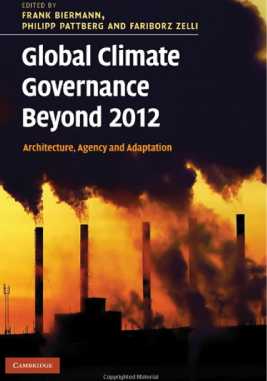
Universal regimes with a predefined emission target - Contraction and Convergence
"Of all the regimes, the ‘Contraction and Convergence’ regime has been analysed most often. The most crucial reason is its simple formulation - which makes it a good reference for any form of allocation. The first step in the 'contraction and convergence’ regime is to establish a long-term global emission profile. Then emission rights are allocated so that the per capita emissions converge from their current values to a global average in a specified target year [Meyer 2000]."
"Global Climate Governance Beyond 2012" on C&C
Frank Biermann, Philipp Pattberg, Fariborz Zelli
09 March 2014 - "African negotiators subscribe to the C&C approach." Addressing Climate Change Challenges in Africa
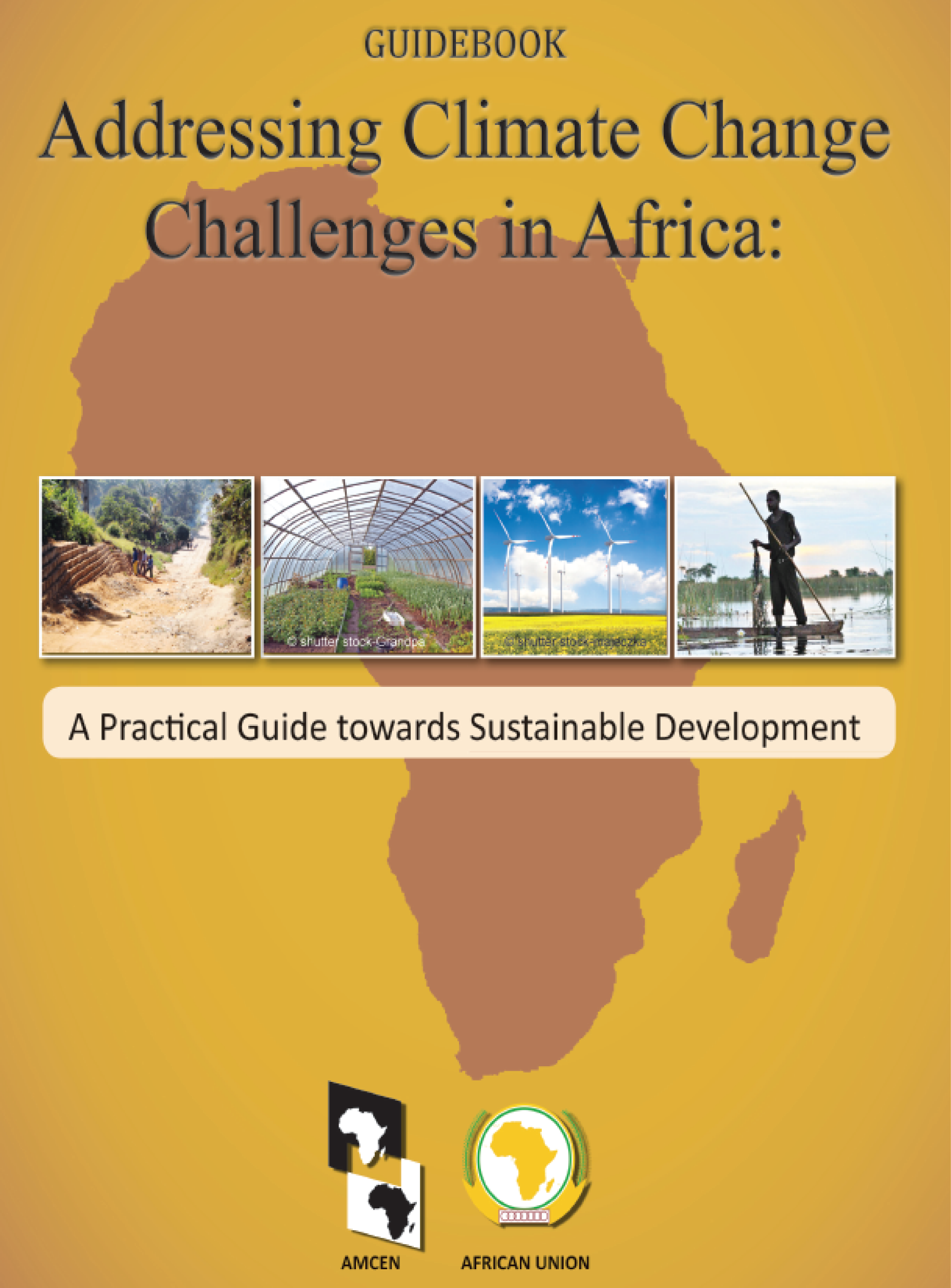
Equity consideration have been taken as a key issue especially the issue of emissions per capita. Developed country Parties emit more carbon dioxide emissions in metric tonnes per capita per annum than the per capita average for African countries. For example, the USA emits about 19 tonnes compared to an average of 1 tonne per capita in African countries (US Department of Energy’s Carbon Dioxide Information Analysis Center (CDIAC, 2008). Greater emissions in the past in both cumulative and per capita terms means that individuals in developed countries are more responsible for global warming and therefore more obliged to reduce emissions.
In the same vein, the negotiators subscribe to the Contraction and Convergence proposal to address the imbalance in the global per capita emissions. The proposal holds the developed Parties responsible for cutting their per capita emissions (contraction) thus meeting developing countries in the middle (convergence). This translates to allowing non-Annex I Parties to develop and increase per capita emissions to a level equal to developed countries.
AMCEN, 2011: Addressing Climate Change Challenges in Africa; A Practical Guide Towards Sustainable Development.
08 March 2014 - "C&C may be the only path to avoid disaster." Challenging the Orthodoxy Susan Schroeder Lynne Chester
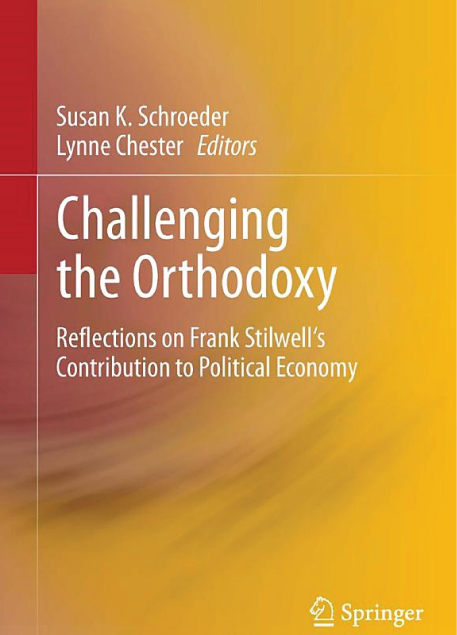
Ecologically sustainable, socially just development could follow a scenario similar to a generalization of Contraction and Convergenceproposed by the Global Commons Institute for GHG emissions. In the latter approach: -
Contraction refers to the 'full-term event' in which the future global total of greenhouse gas [GHG] emissions from human sources is shrunk over time in a measured way to near zero-emissions within a specified time-frame..
Convergence refers to the full international sharing of the emissions contraction-event, where the 'emissions-entitlements' for all countries result from them converging on the declining global per capita average of emissions arising under the contraction rate chosen.
The poor countries would initially increase their per capita emissions while transforming their economies and technologies, so that they could subsequently run their economies with near zero per capita emissions. The rich countries would rapidly reduce their per capita emissions to near zero, while assisting the poor countries in their transition. The convergence would eventually be achieved at an agreed date such as 2050 with the economies of all countries functioning with the same per capita emissions. Although it seems idealistic it may be the only path to avoid environmental disaster and socio-economic collapse.
Reaching international agreement on Contraction and Convergence would be very difficult. However the process could be commenced through agreements on limited specific policies that nations could undertake individually or in groups.
07 March 2014 - "C&C: - simple & robust, it bears the hallmark of genius." Andrew Dlugolecki advisor to UNEPFI
07 March 2014 - "Building an international regime around C&C." World Economic Performance, Prasad Rao Bart van Ark
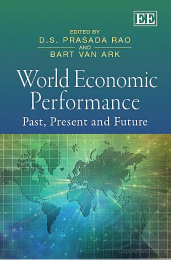
I recall a conversation with leading environmental officials in China in the early 1990s, in which my Chinese inter-locuters stated that human-induced global warming was a substantial problem that required a global response. They said then that China would accept controls on levels of greenhouse emissions and be ready to join a global system for trading emissions rights, so long as the starting point was equal per capita initial rights.
This is not in itself an unreasonable position but it would provide no basis for agreement with developed countries. Eventual agreement must be sought somewhere between the 'established levels' and the 'equal per capita' bases for initial allocations. I have supported suggestions for building an international regime around the idea of 'contraction and convergence' with rights allocated on the basis of established emissions, with some additional restrictions on developed countries and headroom for developing countries over a long transition period, there would be a shift towards equal per capita allocations.
Such a system would involve large transfers of income to countries whose per capita incomes and emissions remained well below global average levels. It would be important for continued international support for the system that these transfers be embedded into a framework of international cooperation on development that made them productive for development.
World Economic Performance Past Present and Future
Prasad Rao Bart van Ark
07 March 2014 - "To promote Equity & Survival " C&C from the Aukland Diocesan Climate Change Action Group

STATEMENT OF PURPOSE / MISSION STATEMENT
Auckland Anglican Diocesan Climate Change Action Group
Global climate change is a real and present threat to the ability of the planet to support the survival of existing species, including humankind. It will compromise the ecology of the planet and exacerbate social injustice.
The Auckland Anglican Diocese formed a Diocesan Climate Change Action Group (DCCAG) in 2007 to help Anglicans and others to confront this threat.
Purpose :
To promote and support policies of, and initiatives to achieve, carbon neutrality within the institutions of the church (Diocese and Parishes), faith communities and society, local and New Zealand governments.
Principles :
- To strive to safeguard the integrity of creation and sustain and renew the life of the earth;
- To seek to transform unjust structures of society; and
- To promote equity and survival as ethical principles in policies of carbon neutrality.
Protocols :
- The DCCAG is a faith-based group, which is guided in its work and deliberations by the diverse theologies, and the structure and policies of the Anglican Communion.
- The group is open to any Anglican.The DCCAG reports, through its Convenor, directly to the Diocesan Council, which it will inform of any decisions, proposed activities or public pronouncements.
- The DCCAG does not support or align with any particular political party. Rather, it encourages cross-party development of policy that will not be compromised by the electoral cycle.
- Individual members of the group are encouraged to exercise their democratic freedom to support any political party of their choosing.
Explanatory notes :
The Statement of Purpose has been drawn from several sources within the Anglican Church in New Zealand and the wider Anglican Communion.
The opening paragraph and the Purpose paragraph are taken from the New Zealand Anglican Bishops' commitment of April 2006 to sustainability and especially to carbon neutrality.
'As bishops, we are now committed to commending a policy of carbon neutrality, and for the sake of us all we call upon governments, local governments, businesses and faith communities to work together in this important area to both contain and reduce climate change.'
The purpose of DCCAG is to support implementation of the Bishops' policy statement.
The first two principles come directly from the Mission principles of the Church endorsed by General Synod, and follow Archbishop Rowan Williams' edict: 'For the Church of the 21st Century, good ecology is not an optional extra but a matter of justice. It is therefore central to what it means to be a Christian.' [Church of England's National Environmental Campaign website, www.shrinkingthefootprint.cofe.anglican.org]
The third principle is derived from the second, and relates directly to the policy framework of Contraction and Convergence promoted by the Anglican Commissioner for Social Justice.
- The first two protocol statements come from agreement DCCAG reached about membership of the group.
- The third protocol results from discussions held between DCCAG and the Diocesan Social Justice Council
- The final two protocol statements about political affiliation come from the New Zealand Bishops' statement, April 2006:
'We wish to affirm this church's support for the exploration and cross party development of policy measures that seek to address, contain and limit the extent and impact of climate change. We believe this development needs to explore both containment and reduction strategies, and that all parties must work together on reducing climate change in recognition that this is a long term problem affecting us all, and solutions cannot afford to be compromised by the electoral cycle.' 'We are opposed to political and economic initiatives which would further contribute negatively to climate change and the needless destruction of our environment.'
The intention of the last protocol is to be transparent about encouraging members to participate in political processes, locally and nationally, as citizens of a democratic country. Group members' political affiliations are a matter of personal choice over which the church exercises no persuasion.
05 March 2014 - "Grand-fathering 'Environmental Colonialism. C&C versus 'ability-to-pay?" The design of Climate Policy MIT
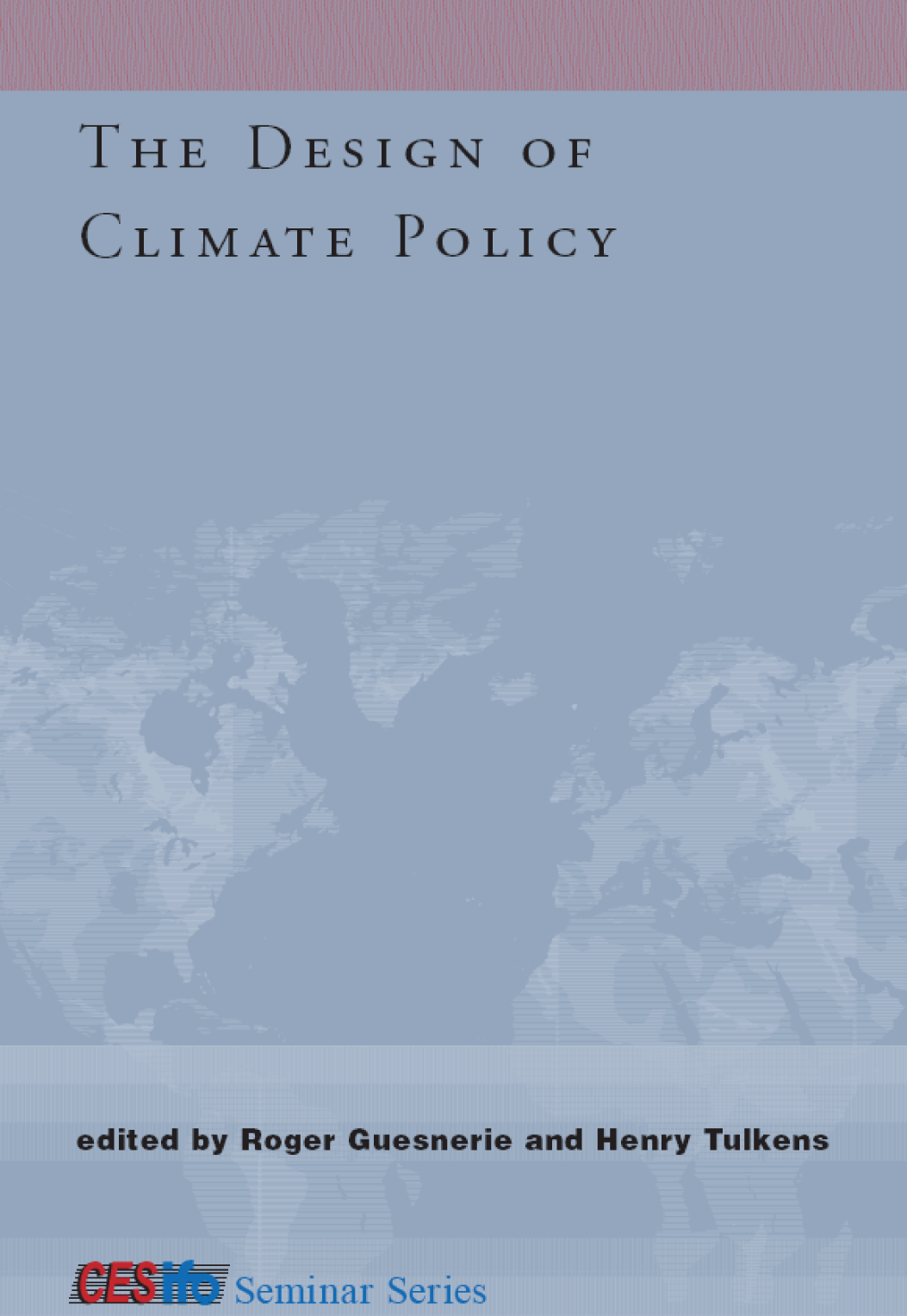
The rhetorical proximity between the notions of equity and equality has transformed the per capita principle into a political symbol for those who consider grandfathering to be environmental colonialism. This symbol was invoked strongly enough to be retained at Marrakech in 2001. Distributing rights for the future use of the atmosphere based on the grandfathering principle would lead to inequitable future contracts that the developing countries cannot accept. In the literature the search for consensus on such explicit principles has evolved mainly into two pragmatic positions, these being (1) starting from grandfathering to achieve a contraction and a convergence toward equal per capita emissions in the long run (Meyer 2000; Ghersi et al. 2003) or (2) to combine (at least indirectly) the ability to pay with other criteria (Jacoby et al. 1999).
05 March 2014 - "Degrees of Responsibility for Climate Catastrophe" Powerful article on Don Brown's Climate Ethics website

Editors Note:
The following entry has been written by guest bloger Michael Hoexter. This entry was first published on the Web Site New Economic Perspectives on February 27, 2014. We republish this article with permission of the author because it contains a number of excellent points about the ethical dimensions of climate change particularly in regard to who should be understood to be responsible for the failure of the United States to take adequate action on climate change. This analysis concludes that different parties should be differentially responsible for inaction on climate change. In addition, the article makes several compelling arguments for the urgent practical need to understand climate change as an ethical and moral problem. The article also explains why government action on climate change is indispensable to an adequate climate change solution, that is, why market solutions such as cap and trade or even carbon taxes will not alone create an adequate US response to climate change. - See more
05 March 2014 - "C&C accepted by Africa Group & many others." Standard Bearers IIED Borot de Battisti McGregor Graffham

Opportunities for utilising ecological space
Because of its past and present greenhouse gas emissions, the industrialised world is the prime driver of climate change. Poor countries, meanwhile, pollute the least and suffer the most from the impacts of climate change. These disparities in emissions also mean that most developing countries, particularly in Africa, have high levels of carbon credit. To redress the balance, developing countries
can use or sell some of their excess ecological space to reduce poverty and boost low-carbon economic growth and development. If the balance is achieved at a globally low level of emissions, it would be in line with the theory of Contraction and Convergence proposed in the 1990s by the Global Commons Institute and accepted as a policy target by the Africa Group, among others.
While a significant share of the emissions from industrialised countries can be attributed to sources such as ‘luxury’ consumption and leisure, African countries emit mostly ‘productive’ carbon, generated to meet basic needs. This difference could be realised in trade-driven activities that benefit developing countries – for example, the export of flowers or green beans from several African countries, including Kenya, to developed countries like the UK (see ‘Fresh thinking’, below). While this may generate additional emissions in developing countries through the production and freighting of these goods, it also enables them to develop their economies and boost the livelihoods of many people.
Standard Bearers
Edited by Adeline Borot de Battisti,
James MacGregor and Andrew Graffham
01 March 2014 - "C&C orders the priorities - the first proposal for an ethically sound approach to climate change." Ruth Makoff UEA

As Goulder and Nadreau have suggested more explicitly, in this example we are faced with two alternative uncertainties – of quantity of emissions under an international carbon tax, or price under cap and trade. “Which uncertainty is worse?” they ask, concluding, “There is no easy answer”. However, an answer can be given if we are clear about how we order the criteria and our justifications for doing so.
Aubrey Meyer’s “prioritized” priorities. The only attempt at such an ordering apparently made to date is by Aubrey Meyer, founder of the “Contraction and Convergence” (C&C) proposal.
C&C was one of the first major policy proposals aiming to offer an ethically sound international approach to mitigating climate change. In common with many other broadly ethical analyses of climate change as an international challenge, it supposed a criterion of equity, but tried to place this within the context of other criteria (referred to as “priorities”), which, ordered according to importance, should ground an agreement on climate change.
These were 1) Precaution, 2) Equity and 3) Efficiency, which, if followed, are supposed to give rise to 4) - “ten thousand things". However, 1 to 3 are all that are significant for our purposes for the time being, since 4 largely signifies that “sustainable prosperity” can only be reached by adhering to criteria 1 to 3 in that order.
Confronting climate crisis: A framework for understanding the criteria for addressing dangerous climate change
Ruth Makoff - Submitted for the degree of Doctor of Philosophy, University of East Anglia, Philosophy Department
01 March 2014 - "To keep analysis tractable we determine C&C with convergence by 2030." Justice Bednar Friedl et al Uni Graz

Equal Emissions. The Equal Emissions Principle demands an equalization of per capita emissions. A variant demands equality not at a certain point of time but rather over a certain time span. Versions of the equal emissions proposal are for example supported by Jamieson (2005), Ott (2007), or the Contraction and Convergence approach (cf. Meyer 2000).
Given this resurge of the question on how burdens should be shared among substantially different countries, this paper first reviews different justice principles which can motivate various burden sharing rules, based on ability, responsibility, and equality considerations.
To keep the analysis tractable, we will determine which types of countries should face ambitious emission reduction targets (in accordance with per capita emission convergence by 2030) and which not (only slight reduction or even increase compared to base year). Depending on the justice principle under consideration, each country will therefore either face a strict or a mild reduction target in the different scenarios.
An Economic and Justice Assessment of Burden Sharing Agreements: Matters of Responsibility, Ability, and Equality
Birgit Bednar-Friedl1,2,*, Dominic Roser3, Thomas Schinko1, Andreas Tuerk1,4
1 Wegener Center for Climate and Global Change, University of Graz, Austria;
2 Department of Economics, University of Graz, Austria;
3 Department of Philosophy, University of Graz, Austria;
4 Joanneum Research, Austria
* corresponding author. Email: birgit.friedl@uni-graz.at
June 25, 2013
01 March 2014 - "Agreeing rates of C&C; central challenge of International climate negotiations." Reframing Climate Jaeger et al
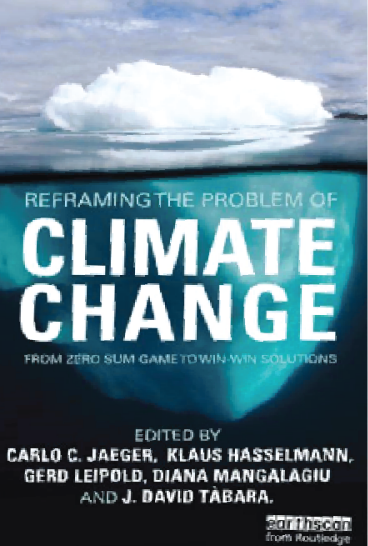
The central challenge of international climate negotialions is to agree upon the rate or contraction and convergence of the per capita emissions of all countries - an approach that was first discussed in the 1990s and has meanwhile become a basic pillar of UNFCCC.
Typical transformation paths computed under the budget constraint implied by the 2°C global warming limit yield total emissions peaking around 2020, decreasing rapidly thereafter to very low val ues by the middle of the century. The later the emissions peak, the more rapid and challenging the required subsequent rate or decrease. To satisfy realistic contraction and convergence criteria, the emissions of the industrialized countries need to start decreasing immediately in order to accommodate longer emission growth phases for the emerging and less developed economics.
Adherents of the top-down approach argue that the global interdependencies mandate global solutions in the fo rm of binding international climate agreements. The most straightforward way to realize equitable contraction and convergence trajectories, for example, would be to apply a 'stick' policy in the rorm of a global cap-and-trade system generalizing various regional or national cap-and-trade systems, such as the European Emission Trading System (ETS) or similar schemes in the US.
In the approach proposed by Wicke and Durr-Pucher (2006), for example, each country would be assigned a total number of emission permits proportional to its population, in accordance with the principle of equal per capita emission rights. Countries with low per capita emissions would then be able to sell their initially surplus emission rights to countries with higher per capita emissions, thereby achieving two important objectives: (i) global investments would be attracted into the most effective channels for reducing emissions; (ii) capital and technology would be transfrerred from the industriaJ countries to the emerging and less developed countries.
Thus the resultant contraction and convergence trajectories would be economically optimal, generate transfers from industrialized countries to emerging and less developed countries, and be consistent with the principal of equal per capita emission rights. Each country would furthermore be able to implement its own individual policies for reducing emissions, for example, by auctioning its national contingent of emission permits and using the income for subsidies for renewable energy, or by introducing additional emission regulations. The basic principle of equal per capita emission rights would need, of course, to be adjusted to allow for different regional climates, different access to natural resources, etc. and would also need to be augmented by further global agreements on non-C02 greenhouse gases, on deforestation, etc.
Reframing the Problem of Climate Change
Carlo C. Jaeger, Gerd Leipold, Diana Mangalagiu, Klaus Hasselmann, J. David Tàbara
01 March 2014 - "C&C - respect for natural human and social capital." ESD Dialogues Marilyn Mehlmann Olena Pometun

There is a growing secular discussion on climate ethics and other ethical dimensions of of (un)sustainable
development. The basic principles involved - respect for natural, human and social capital - are also expressed in more technical utilitarian terms as for instance in Contraction and Convergence
Eco Dialogues
Marilynh Mehlman and Olena Pometun
01 March 2014 - "C&C forward thinking to a sustainable middle way." Eco Villages Karen T Litfin
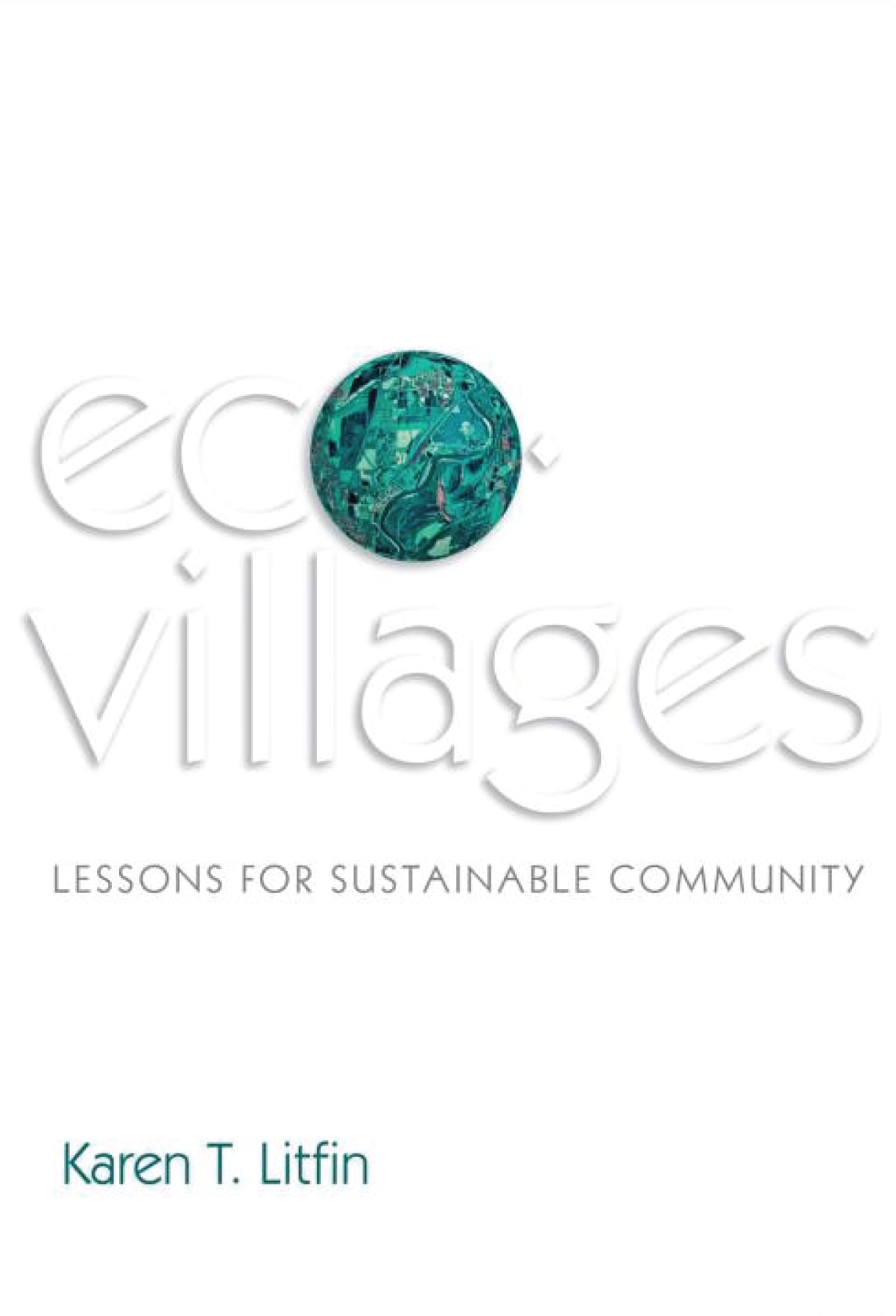
In our economically polarized world, where average per capita income is roughly $7,000 but extremes of of over-consumption and destitution persist, the down-to-earth prosperity of eco-villages demonstrates the possibility of a happy medium that is globally viable. A few forward-thinking economists have laid out a process of getting there: contraction and convergence In other words , downsizing the for the global rich and sustainable upsizing for the global poor converging on a sustainable middle way.
Eco Villages
Karen T Litfin
|
| |
|
|












